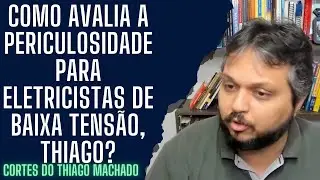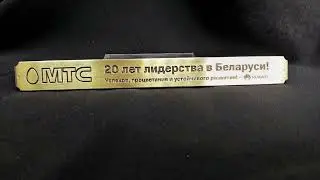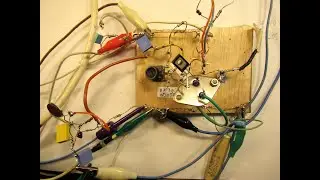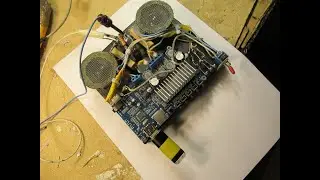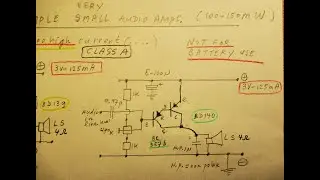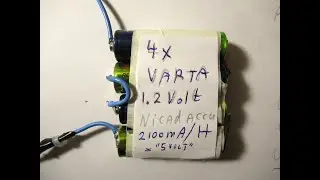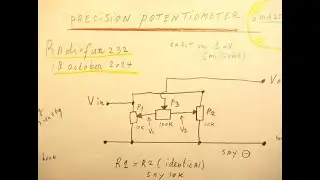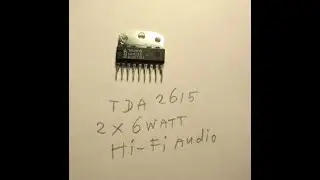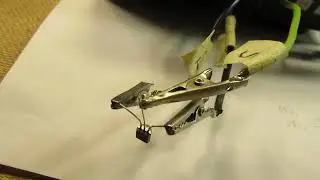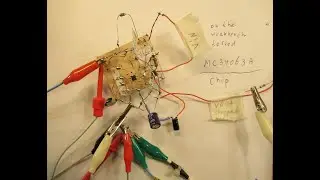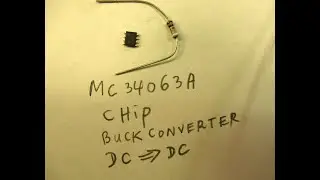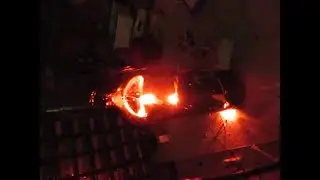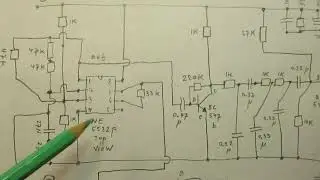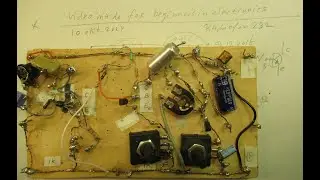Analog timer switch for very long times (= many hours) electronic schematic
Corrections to the video: press the “on” switch for 3 seconds, then release (!) it.
Correction: on 3.42 up to 3.44 in the video I say “that the PVC varnished wood has an extremely low resistance on the surface”, but of course I mean: an “extremely high resistance on the surface”. Sorry for that.
Easy to make analog timer that switches a circuit “on” for a few hours, after you have switched the “on” switch (press the button for 3 seconds (!) to make the capacitor charge enough). In the video the Darlington drives a 6 Volt bicyle lamp from say 1-2-3 Watt, but that can be replaced by a 6 Volt relay. All 6 Volt or 5 Volt relays will work (they can drive 110 V AC or 230 V AC or other voltages, whatever you want and need as long as the relay was made for 5 V or 6 V in the driver coil).
The “on” switch sends charge into the timing capacitor (here in the uF range) and that capacitor (after the “on” switch is released after 3 seconds) sets the transistors into the “conduction” mode, which means that the 6 V relay or bicycle lamp is activated and goes on in that situation till the capacitor is completely discharged. Then the relay or lamp switches off.
This can last for hours, that completely depends on the electrolytic capacitor value. Advice: a 100 uF - 60 Volt cap works better compared to a 100 uF - 12 Volt cap, the 60V cap has better insulation properties and lasts longer in time (tested).
There must be no “creep” electric currents in the surface where all the components are mounted on. Small “creep currents” (Pico or Micro Ampères flowing through the mounting surface) can reduce the (discharge) time.
But when the components are mounted on normal glass-fiber plates or even when mounted on wood well varnished with glue for hard PV (smell acetone) there will be no important creep-currents that can disturbe the good properties from this circuit.
So don’t worry it is a “always working” circuit though the exact “switch-off time” depends on the capacitor properties.
Of course you can use the circuit also as a “switch on” circuit after X hours when you use a relay with a “switch on” contact when that relay is activated after “X” hours.
Test that all first in an experimental setup on your table. Reason: the “null” state from the relay contacts (=the not activated state) is leading/decisive for the possibilities to switch something (on or off) at the beginning stage from the electric/electronic cycle.
Nb: the video stops suddenly due to the battery exhaustion from my camera but anyway, everything important was told.
NB: somewhere I say that the 1000 V - 3 Amp or 1 Amp protection diode must be mounted "over the relay contacts" but of course I mean: ""over the relay coil". That is more or less the standard way to protect a transistor against high peak voltages, though the BD 139 can handle a higher C-B voltage than the C Voltage. Anyway: you can damp out the high voltage peaks on a relay coil also by bridging the coil with a resistor in the 10k - 100K range in relay circuits from 6-12-24 Volt (not higher).
All the videos hat I have published on You Tube can be found via my Channel Trailer: Link is
• Radiofun232 on YouTube. Updated month...
In thematic order you can find these video’s under the “comments” section. My books about electronics are available via the website from “Lulu”, search for author “Ko Tilman” there.
Link is https://www.lulu.com/shop/search.ep?k...
My books are also available via Barnes and Noble and via Amazon. Regarding all my video’s: I constantly keep them actual, so the original video’s with the most recent information are always on YouTube. That is the source, and search there. When my video’s are reproduced or re-edited on other websites/channels you can not (!) be sure about the original content (=really working electronics) and important adaptations to the circuits.
Be aware of that, I saw on the internet many of my circuits reproduced in a poor or even not proper way. I can not help that, sorry. Upload 22 January 2018.
Please note: there is always 1 troll that dislikes my video's, whether they are good or bad. I know his name but of course I cannot make that public on You Tube. Upload 25 January 2018.
